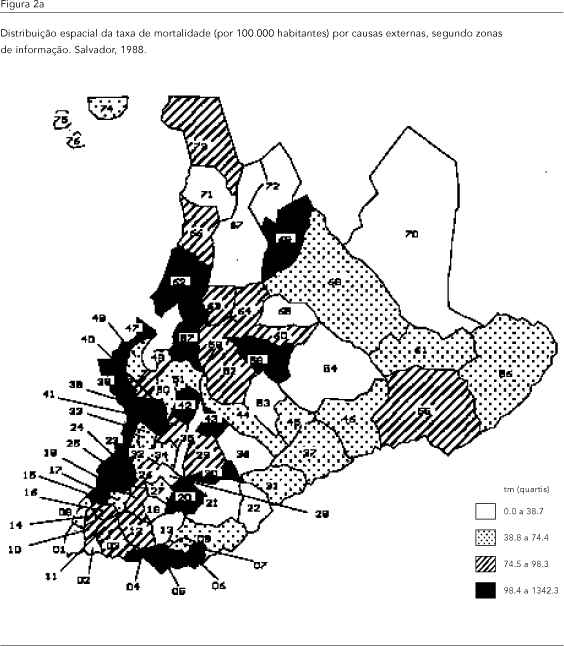Since 1980, external causes (ICD-9 E800-E999) have been ranked as the second leading causal group for mortality in Brazil, thus becoming a major public health problem. This study aimed to describe spatial distribution trends for violent deaths in the urban setting of Salvador, a city in Northeast Brazil, for the years 1988, 1991, and 1994. An ecological study was conducted, and mortality data were obtained from death certificates and the archives of the Institute for Forensic Medicine. There was an increase of 34.6% in the number of deaths from external causes between 1988 and 1994. The highest mortality rates were among men from 20 to 29 years of age (from 192.0 to 262.0/100,000) and those 65 years and over (from 188.7 to 258.1/100,000). Homicides were the leading cause of violent deaths in about 75.0% of neighborhoods. The authors discuss the need for comprehensive public policies and an interdisciplinary approach to elucidate the causes and deal with the problem of violence.
Sudden Death; Mortality; Violence; Spatial Analysis








